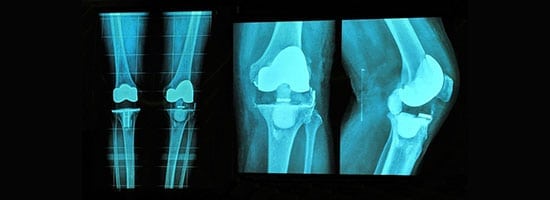
Traditional Knee Replacement vs. Minimally Invasive Knee Replacement
Knee replacement (arthroplasty) is an orthopedic procedure often performed when non-surgical treatments that often include various forms of physical therapy and medication aren’t effective. One of the most common bone surgeries performed in the United States, knee replacement can also lead to improvements with mobility, range of motion, and athletic performance. Today, patients have a choice between traditional knee replacement and a minimally invasive version of the same procedure.
What Is Knee Replacement Surgery?
Knee replacement usually becomes an option when a knee is damaged by a condition like osteoporosis or a serious injury. During any type of knee replacement surgery, the damaged part of the knee is replaced with one that’s made of plastic or metal. This artificial joint is attached to supporting parts of the knee to allow the replaced knee to function normally. There are four type of knee replacement surgery that may be performed:
- Total knee replacement
- Partial knee replacement
- Kneecap replacement
- Complex/revision knee replacement
How Is It Traditionally Performed?
With traditional knee replacement, vertical incisions about 8-10 inches in length are made in the front part of the knee to reach the affected joint. Bone and cartilage are replaced with artificial components. The patella (kneecap) is sometimes cut and resurfaced. A plastic spacer is then inserted to allow the newly inserted component to move smoothly.
What Happens During Minimally Invasive Knee Replacement Surgery?
When knee replacement is done with minimally invasive techniques, incisions are typically 4-6 inches in length instead of 8-10 inches. There is also less cutting of tissues around the knee, which often reduces healing time. The same materials used with traditional knee replacement surgery are used with less-invasive procedures. The difference is that the femur and tibia are prepared with specially designed instruments. Efforts are also made to avoid or minimize trauma to the quadriceps tendon and thigh muscles. Benefits associated with minimally invasive surgery typically include:
- Less postoperative pain
- Fewer risks during surgery, specifically with problems that may include nerve and artery injuries, infection, or errors with implant positioning
- Better responses to physical rehabilitation efforts
- Less damage to soft tissues
- More rapid return to normal activities
While most patients would likely opt for any procedure involving smaller incisions and a faster recovery period, minimally invasive knee replacement isn’t right for every situation. Preferred candidates are usually younger patients not likely to have underlying health issues that could complicate surgery. Additionally, patients must be committed to actively participating in the rehabilitation process. An orthopedic specialist can help you explore your options if you’re at a point where surgery is an option for your knee pain.

